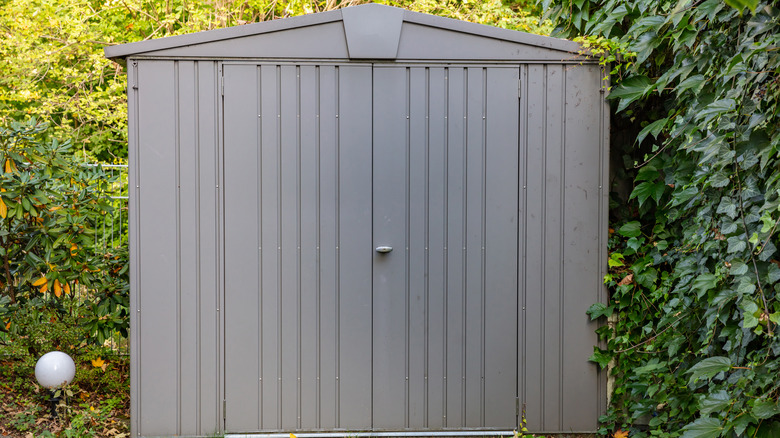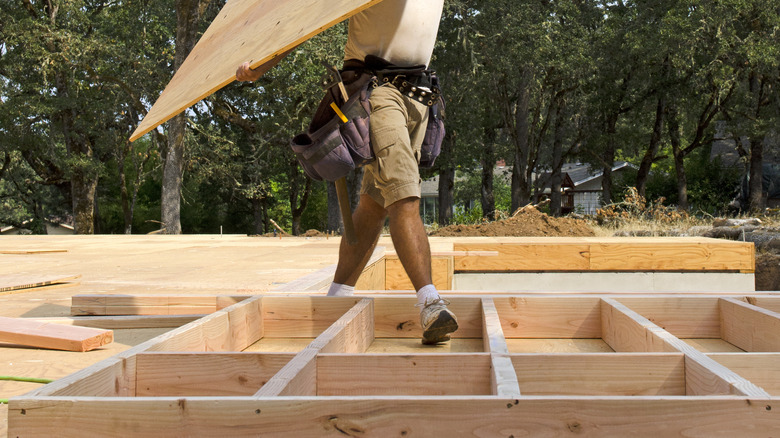Tips To Prevent Condensation In Metal Sheds (And Why You Need To)
When it comes to outdoor storage, metal storage sheds have become the go-to solution for homeowners on the lookout for something that is both durable and strong. Perfect for stashing away gardening tools, outdoor furniture, or even serving as a cozy workshop for DIY projects, these sleek space-savers have a lot to offer. However, there's a bit of a twist in the tale: condensation. Yes, you heard that right — your trusted metal shed can end up sweating like a glass of ice water on a hot day if the conditions are just right.
So, what is condensation? If you're picturing those pesky droplets that form on your bathroom mirror after a hot shower, or water on the inside of your windows on a humid day, you're right on the money. At its core, condensation occurs when water vapor in the air cools and transforms back into liquid. Think of your shed a little like a greenhouse: during the day, it soaks up the sun and stores heat. When nighttime arrives, the exterior chills down, creating a recipe for moisture.
While it may seem innocuous at first, this accumulation of moisture can spell trouble. Left unchecked, condensation can lead to rust and corrosion, turning that metal marvel into a rusty relic. Not to mention the potential for mold growth, which isn't just harmful to your shed but could also pose health risks to anyone using the space. So, while metal sheds are fantastic for storage, keeping an eye on condensation is crucial to maintaining their functionality and your health.
How can you prevent condensation inside your shed?
Thankfully, there are several practical steps you can take to bid farewell to that pesky condensation and maintain a moisture-free environment. Improving the ventilation in your shed is a good first step. Installing vents or windows opposite each other creates a delightful cross breeze that helps air circulate and kick moisture to the curb. If you're a fan of natural airflow, don't hesitate to open those windows now and then!
Next, consider running a dehumidifier in your shed. This little gadget is a powerhouse when it comes to zapping excess moisture from the air but be sure to pick one that suits the size of your shed, and keep an eye on humidity levels with a hygrometer. Insulating your metal shed is another game-changer that can be very useful in the long run. Foam boards, fiberglass insulation, or spray foam can protect against temperature fluctuations that lead to condensation. Remember to seal any gaps or joints where moisture might sneak in.
Finally, scout for gaps and cracks around doors, windows, and vents, sealing them with caulking to keep dampness at bay. And don't forget about the floor! Most of the moisture comes from the bottom up, which means you want to get all around the seams between the floor and walls or doors.
How do you prevent condensation from outside your shed?
While you can do a lot to prevent condensation inside your shed, you should also make sure you do so from the outside to the inside as well, starting with a solid base. A concrete floor is the best option for a shed, but another effective solution to combat condensation is to build a raised timber sub-floor. This timber floor creates a supportive base for the metal shed frame while forming a barrier against potential sources of dampness. An essential feature to incorporate into this design is adequate ventilation under the shed. By allowing air to flow beneath the shed, you can significantly reduce the likelihood of moist air seeping in, thus keeping the interior dry and condensation-free. You might also want to add a damp-proof membrane to prevent moisture from rising; place it right under your shed's base to block moisture from rising during those chilly months.
Finally, insulation is important here, too. Equip your shed's exterior walls with materials like foam boards or rigid panels designed for outdoor use. Be sure to read the manufacturer's instructions for proper installation; not doing so can create gaps condensation can take advantage of. And don't underestimate the power of caulking. A tight waterproof seal around doors, windows, and air vents prevents condensation from sneaking in like an uninvited guest. All these tips should help prevent condensation from affecting your metal shed, meaning the stuff you store inside should be safe and sound for a long time to come.


